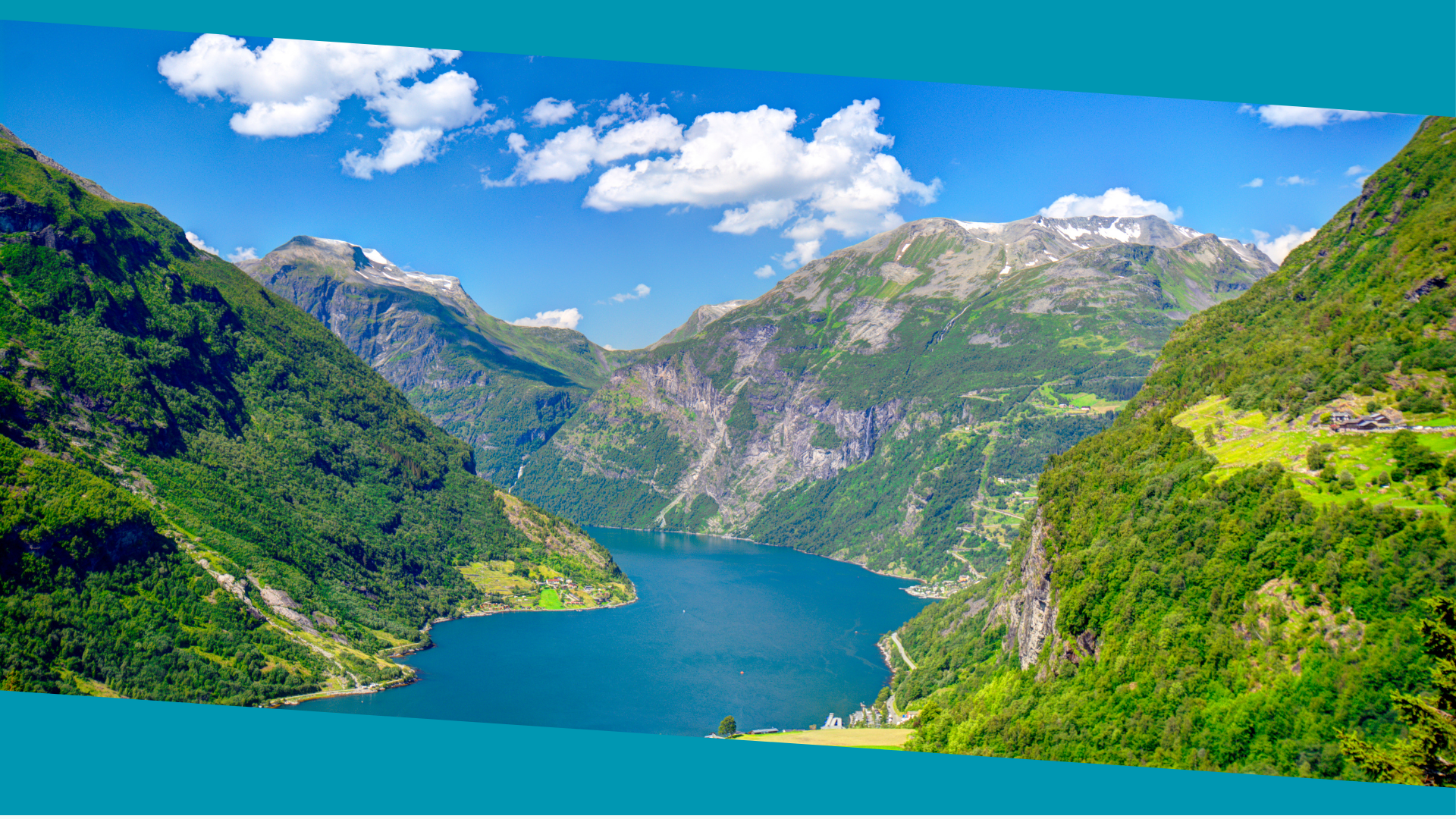

Get Ready for Your Norwegian Adventure: Essential Phrases to Know!
Norway, known for its stunning fjords, picturesque landscapes, and rich cultural heritage, is a country that has much to offer to travelers. Located in Northern Europe, Norway is known for its Viking history, beautiful mountains, and vibrant cities. The Norwegian language, also known as Norsk, is the official language of Norway and is spoken by the majority of the population.
Learning the Norwegian language can greatly enhance your travel experience in Norway. While many Norwegians speak English fluently, making an effort to learn some basic Norwegian phrases can go a long way in connecting with the locals and immersing yourself in the culture. Additionally, understanding the language can make it easier to navigate through the country, order food, ask for directions, and engage in conversations with locals.
Table of Contents
ToggleBasic Norwegian phrases for greetings and introductions
When visiting Norway, it’s important to know some basic greetings and introductions to make a good first impression. Here are some common phrases:
– “Hei” (Hi) – This is a casual way to say hello.
– “God morgen” (Good morning) – Used to greet someone in the morning.
– “God dag” (Good day) – A more formal greeting used throughout the day.
– “Hvordan har du det?” (How are you?) – A common way to ask someone how they are doing.
– “Jeg heter…” (My name is…) – Used to introduce yourself.
– “Hva heter du?” (What is your name?) – Used to ask someone’s name.
– “Takk” (Thank you) – A polite way to express gratitude.
– “Ha det bra” (Goodbye) – Used to say goodbye.
Essential phrases for ordering food and drinks in Norway
Norway is known for its delicious cuisine, and trying out local dishes is a must when visiting the country. Here are some essential phrases for ordering food and drinks in Norwegian:
– “En meny, takk” (A menu, please) – Used to ask for a menu in a restaurant.
– “Jeg vil gjerne bestille…” (I would like to order…) – Used to place an order.
– “Kan jeg få regningen, takk?” (Can I have the bill, please?) – Used to ask for the bill.
– “En kopp kaffe, takk” (A cup of coffee, please) – Used to order a cup of coffee.
– “En flaske vann, takk” (A bottle of water, please) – Used to order a bottle of water.
– “Takk for maten” (Thank you for the meal) – A polite way to thank the server after a meal.
Asking for directions and transportation options in Norwegian
When exploring Norway, it’s important to know how to ask for directions and understand transportation options. Here are some useful phrases:
– “Hvor er…?” (Where is…?) – Used to ask for directions to a specific place.
– “Hvordan kommer jeg dit?” (How do I get there?) – Used to ask for directions on how to reach a specific place.
– “Hvor er nærmeste busstopp/togstasjon?” (Where is the nearest bus stop/train station?) – Used to ask for the location of the nearest bus stop or train station.
– “Kan du hjelpe meg?” (Can you help me?) – Used to ask for assistance.
– “Hvor mye koster en billett til…?” (How much does a ticket to… cost?) – Used to ask for the price of a ticket to a specific destination.
Common Norwegian expressions for shopping and bargaining
Norway offers a wide range of shopping opportunities, from high-end boutiques to local markets. Here are some common phrases for shopping and bargaining:
– “Hvor mye koster dette?” (How much does this cost?) – Used to ask for the price of an item.
– “Kan du gi meg rabatt?” (Can you give me a discount?) – Used to ask for a discount.
– “Har du noe billigere?” (Do you have anything cheaper?) – Used to ask for a cheaper alternative.
– “Jeg tar den” (I’ll take it) – Used to indicate that you want to purchase an item.
– “Takk, jeg bare ser” (Thank you, I’m just looking) – Used to politely decline assistance when browsing.
Useful phrases for emergencies and medical situations in Norway
While no one wants to think about emergencies or medical situations while traveling, it’s important to be prepared. Here are some useful phrases for emergencies and medical situations:
– “Hjelp!” (Help!) – Used to call for assistance in an emergency.
– “Jeg trenger hjelp” (I need help) – Used to ask for help.
– “Jeg har vondt ..” (I have pain in…) – Used to describe a specific medical issue.
– “Kan du ringe ambulanse/lege?” (Can you call an ambulance/doctor?) – Used to ask someone to call for medical assistance.
– “Takk for hjelpen” (Thank you for your help) – A polite way to thank the medical staff.
Norwegian vocabulary for outdoor activities and sightseeing
Norway is known for its breathtaking natural beauty, making it a popular destination for outdoor activities and sightseeing. Here are some useful phrases:
– “Hva er dette stedet kjent for?” (What is this place known for?) – Used to ask about the significance of a particular place.
– “Hvor er det beste stedet å se…” (Where is the best place to see…) – Used to ask for recommendations on where to see specific attractions.
– “Kan du anbefale en god tur?” (Can you recommend a good tour?) – Used to ask for recommendations on guided tours.
– “Takk for turen” (Thank you for the tour) – A polite way to thank the guide or staff after a tour.
Tips for pronouncing Norwegian words correctly
Norwegian pronunciation can be challenging for non-native speakers, but with some practice, it can be mastered. Here are some tips for pronouncing Norwegian words correctly:
– Pay attention to vowel sounds: Norwegian has several vowel sounds that may be different from those in English. Practice pronouncing these sounds to improve your pronunciation.
– Listen to native speakers: Listening to native speakers can help you get a better understanding of the correct pronunciation and intonation.
– Practice speaking aloud: The more you practice speaking Norwegian aloud, the more comfortable you will become with the pronunciation.
Local customs and etiquette to keep in mind when visiting Norway
When visiting Norway, it’s important to be aware of local customs and etiquette. Here are some tips:
– Punctuality is important: Norwegians value punctuality, so it’s important to arrive on time for appointments and meetings.
– Respect personal space: Norwegians value their personal space, so it’s important to maintain an appropriate distance when interacting with others.
– Remove your shoes indoors: It is customary to remove your shoes when entering someone’s home in Norway.
– Say “takk for maten” after a meal: It is customary to say “takk for maten” (thank you for the meal) after finishing a meal at someone’s home.
Resources for further learning and practicing Norwegian language skills
If you’re interested in further learning and practicing Norwegian language skills, there are several resources available:
– Online courses: There are many online courses available that can help you learn Norwegian at your own pace.
– Language exchange programs: Language exchange programs allow you to practice your Norwegian with native speakers while helping them learn your native language.
– Language learning apps: There are several language learning apps available that can help you practice your Norwegian skills on the go.
In conclusion, learning the Norwegian language can greatly enhance your travel experience in Norway. By familiarizing yourself with basic phrases for greetings, ordering food, asking for directions, shopping, emergencies, and outdoor activities, you can navigate through the country with ease and connect with the locals on a deeper level. Additionally, understanding local customs and etiquette can help you show respect and gratitude during your visit. So why not take the time to learn some Norwegian phrases and immerse yourself in the rich culture of Norway?
If you’re interested in learning Norwegian phrases to enhance your language skills, you might find this article on NLS Norwegian’s website helpful: “Navigating Norwegian Markets: Essential Vocabulary for Shoppers.” This article provides key words and phrases that will assist you in your shopping experiences in Norway. From understanding food labels to interacting with local vendors, this article covers all the essential vocabulary you need to navigate Norwegian markets with confidence. Check it out here.

Norwegian A1-A2
Course Overview The Norwegian A1-A2 course is an online program focused on teaching essential Norwegian grammar and vocabulary. It includes a variety of materials and topics, with opportunities to interact with a Norwegian teacher entirely online. Curriculum Highlights The course covers key areas such as grammar and vocabulary and topics such as family, daily life, education, work, traditions, and leisure activities. Who Should Enroll? This course is perfect for beginners or those at the A1 or A2 levels who want to improve their Norwegian skills. What You Get Access to the full Norwegian A1-A2 course. A monthly 1-hour online conversation with a teacher. Many written and oral assignments. Comprehensive information on Norwegian grammar, Norwegian vocabulary and how to use them, important sentence structures, etc. Tips on additional resources to further enhance your Norwegian learning.
0 students enrolled
Last updated Dec 10th, 2024
If you want to learn Norwegian, you can register for classes here. We look forward to hearing from you and helping you become fluent in Norwegian.






